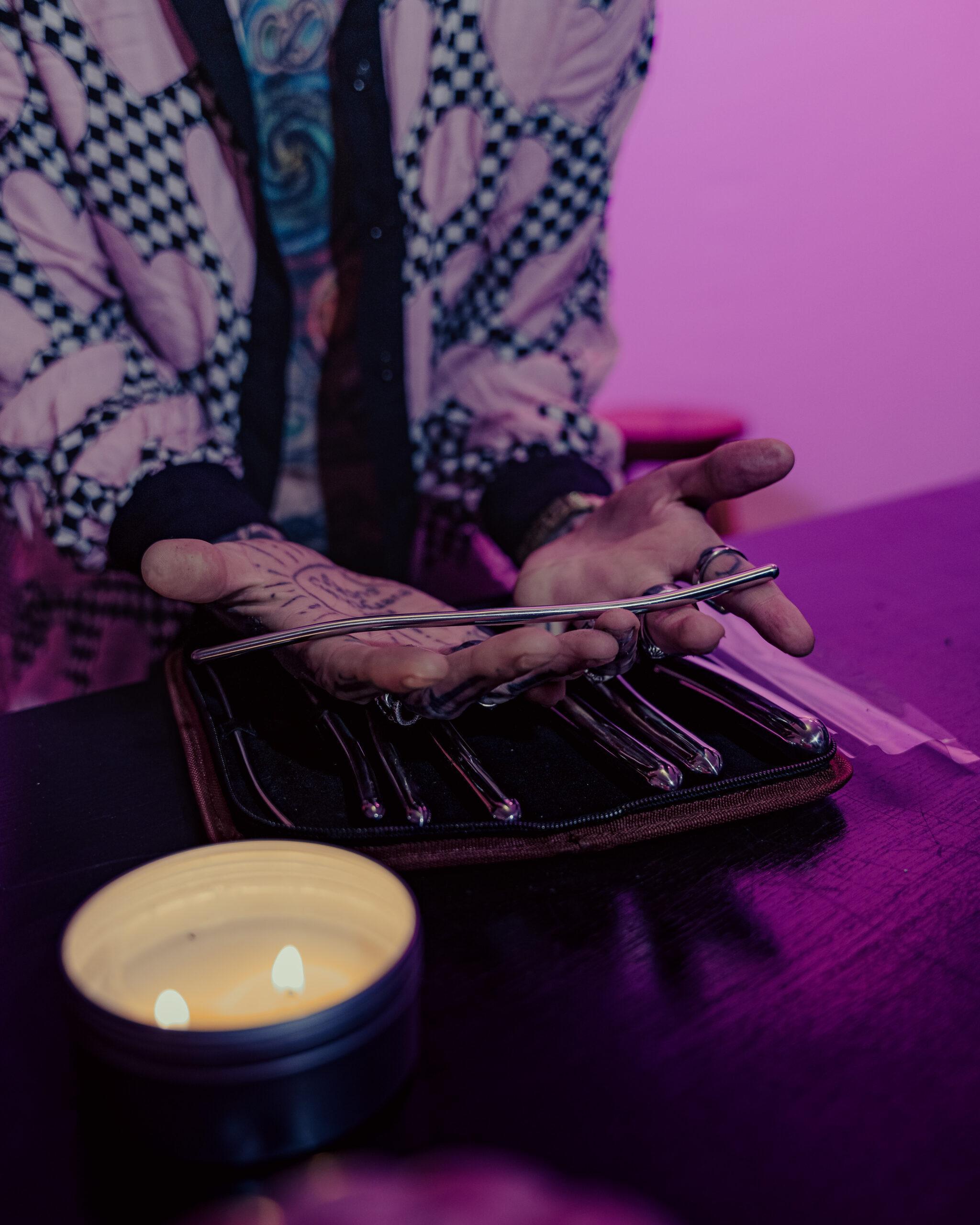Being genuine and authentic is key to making a connection with someone. Avoid overthinking or analyzing every little thing he says, and instead focus on building a meaningful relationship.
- Find common ground through shared interests or experiences
- Be confident in who you are and what you have to offer
- Show appreciation for the little things he does for you
- Keep the conversation balanced, avoiding too much one-sided talking
Remember that building a strong connection takes time and effort. Don’t rush into anything or try to force it – instead, focus on getting to know him as a person.
8. Develop Emotional Intimacy
Emotional intimacy is the foundation upon which any successful relationship is built, and when it comes to captivating someone’s heart, it’s essential to understand how to create an unbreakable bond with a guy. While some people may be naturally more affectionate or empathetic, there are certain strategies that can help anyone build emotional intimacy with another person. By learning to tap into each other’s emotions, desires, and deepest needs, individuals can cultivate a profound sense of connection that goes beyond physical attraction. In this article, we’ll explore 15 powerful ways to make a guy fall deeply in love with you, from building trust and communication to understanding his emotional triggers and responding with empathy.
Share Your Feelings and Vulnerabilities
To truly make a guy fall in love with you, it’s not just about checking off a list of superficial qualities or trying to fit into societal standards of what makes a “good girlfriend.” It’s about creating an emotional connection that goes deeper than surface-level attraction.
This means being willing to open up and share your feelings, vulnerabilities, and desires with him. It requires vulnerability, trust, and a willingness to be seen and accepted for who you truly are. By sharing your emotions and being honest about what makes you tick, you can create a sense of intimacy and connection that goes beyond physical attraction.
For example, instead of trying to impress him with fake smiles or rehearsed conversations, try having genuine, heartfelt conversations about your hopes and dreams, fears and insecurities. This will help him get to know the real you and see the depth of your emotions, which can be incredibly attractive and endearing.
Additionally, being willing to show affection and emotional support in the midst of challenges or conflicts can also make a significant impact on his feelings. By being there for him when he needs you, you can create a sense of safety and security that can be incredibly powerful in building a strong emotional connection.
Ultimately, making a guy fall in love with you is not about manipulating or pretending to be someone you’re not; it’s about being your authentic self and allowing him to see the real depth of your emotions. By doing so, you can create a foundation for a healthy, loving relationship that goes far beyond surface-level attraction.
9. Show Respect and Admiration
No one can deny the allure of finding that special someone, someone who sweeps you off your feet and makes your heart skip a beat. For many women, there’s nothing quite like the feeling of being deeply in love with someone. And while it may seem like a fairy tale come true, falling in love with someone requires effort, understanding, and a willingness to connect on a deeper level. Here are 15 powerful ways to make a guy fall in love with you.
Value His Independence and Strengths
Nine, often referred to as the “Ninth Planet” of our solar system, has captured the imagination of astronomers and scientists alike with its mysterious nature and enormous size.
- Astrophysicists have long been fascinated by the study of Kuiper Belt Objects (KBOs), which are icy bodies beyond Neptune’s orbit. The discovery of the first KBO in 1930 marked the beginning of an era of exploration into the unknown.
- Today, we know that there are hundreds of thousands of KBOs, each with its unique characteristics and potential for holding secrets about our solar system’s formation.
In terms of personal growth and development, having independence is a sign of strength. It takes courage to stand alone and make one’s own decisions, and it is this independence that allows individuals to truly flourish.
10. Be Humble and Self-Deprecating
It’s hardly a secret that men can be notoriously difficult to decipher, but when it comes to winning their hearts, some secrets are still worth sharing. The age-old quest for love and affection can leave us feeling like we’re navigating uncharted territory. While there’s no foolproof formula for taming the heart of even the most stubborn gent, there are certain tactics that have proven time and again to be effective. From subtle gestures to genuine connection, the key lies in finding a balance between confidence and vulnerability.
Avoid Bragging or Arrogance
I’m not exactly an expert on love, but I’ve picked up a few things from observing people around me. It’s funny how relationships work – we think we know what makes someone fall in love, but really, it’s all about building connections and understanding each other’s quirks.
From what I’ve learned, making a guy (or anyone) fall in love with you requires effort, patience, and a willingness to be vulnerable. It’s not about trying to change who they are or forcing them into a relationship. It’s about creating an environment where they feel comfortable being their true self around you.
Here are some strategies that might help:
1. Share your passions: When we’re doing something we love, it’s infectious and can bring out the best in us. Find what makes you tick and share it with someone special.
2. Support their dreams: Whether it’s a crazy idea or a realistic goal, showing interest in someone’s aspirations can be incredibly attractive.
3. Be spontaneous: Plan surprise dates, try new things together – spontaneity can keep the spark alive.
4. Cultivate deep conversations: Sometimes we get so caught up in our daily routines that meaningful connections get lost. Make time for deep chats about life, hopes, and fears.
5. Be willing to learn: Relationships are a two-way street – being open to learning from each other can strengthen bonds and create a sense of mutual respect.
Remember, love is a unique experience that can’t be forced or manufactured. It’s about building trust, understanding, and empathy with someone. Focus on becoming the best version of yourself, and the right person will notice.
11. Use Positive Body Language
Surrendering to the thrill of falling in love can be an exhilarating experience, and for women seeking to spark a romantic connection with someone special, understanding the subtleties of attraction is key.
Display Openness, Warmth, and Interest
This is an exciting time to talk about attraction and love! When it comes to making a guy fall in love with you, it’s not just about checking off a list of romantic gestures or using cheesy pickup lines. It’s about creating a connection that goes beyond surface-level attraction and builds a deep emotional bond.
One powerful way to make a guy fall in love is to show genuine interest in his life and passions. Ask him questions, listen actively, and find common ground to talk about. This can be as simple as asking him about his favorite hobbies or what he’s been up to lately. When you take the time to understand and support what matters most to him, you’ll start to build a sense of trust and mutual respect.
Another way to make a guy fall in love is to show your authentic self. Don’t try to be someone you’re not or pretend to have interests you don’t really have. Be vulnerable, share your own passions and dreams with him, and let your personality shine through. When you feel comfortable in your own skin, you’ll come across as confident and attractive.
A strong sense of self-worth is also essential for building a deep connection with someone. When you know your own worth and aren’t afraid to show it, you’ll exude an aura of confidence that can be incredibly alluring. Remember, a guy who loves and respects you will appreciate your strengths and support your passions.
Physical touch can play a significant role in building intimacy and attraction as well. Hold his hand, give him hugs, or simply lean against each other while watching a movie. Physical contact releases oxytocin, often referred to as the “love hormone,” which helps strengthen emotional bonds between partners.
A sense of adventure and shared experiences can also create lasting memories and foster deep connections. Plan surprise dates, try new activities together, or take weekend trips – anything that allows you to bond over shared excitement and curiosity.
12. Be Spontaneous and Adventurous
Falling head over heels into the depths of someone’s soul can be an exhilarating adventure, but it takes more than just charm and good looks to snag that elusive love spark. Sometimes, it takes a gentle nudge in all the right directions – a whispered secret, a playful challenge, or a daring move that sets off a chain reaction of emotions.
Surprise Him with New Experiences
Imagine strolling through a quaint town, hand in hand, with a charming stranger who’s captivated by your wit and charm. It’s not just about a romantic dinner or a sunset on the beach; it’s about creating moments that leave him wanting more.
Take him on an impromptu picnic in a scenic park, complete with a basket of his favorite snacks and a bottle of chilled wine. As you laugh and chat, share stories and secrets, he’ll begin to feel a deep connection with you.
The thrill of adventure can be intoxicating – plan a spontaneous weekend getaway to a nearby city or a cozy bed and breakfast. The unknown excitement will have him captivated by your fearlessness and sense of humor.
A cooking class together can be an incredible bonding experience, as you both learn new culinary skills and taste the fruits of your labor over a romantic dinner.
The sound of jazz music drifting through a swanky nightclub can set the tone for a sophisticated evening. Take his hand, sway to the rhythm, and let the magic unfold.
A surprise hot air balloon ride with breathtaking views will leave him awestruck and yearning for more – of your love and companionship.
The simplest pleasures in life can bring the greatest joys: take him on a bike ride through a nearby nature reserve or play a friendly game of tennis together, basking in the thrill of competition.
Write love notes and hide them around his favorite places, leading him on a treasure hunt of emotions.
A relaxing couples’ spa day can melt away stress and leave you both feeling serene and rejuvenated – perfect for reconnecting on a deeper level.
The beauty of spontaneity lies in the unknown; take him on an impromptu road trip to a place he’s never visited before, where the wind in his hair and laughter at your jokes will seal your love forever.
13. Show Affection Through Small Gestures
To capture someone’s heart and make them fall deeply in love with you, it’s not just about grand romantic gestures or extravagant displays of affection. Sometimes, it’s the small, thoughtful actions that speak volumes to another person’s heart. It’s the little things we do for someone we care about that show we truly value and appreciate them. By incorporating these everyday expressions of love and care into our daily lives, we can build a strong foundation for a healthy and fulfilling relationship.
Multiply Little Acts of Kindness
Showing affection through small gestures can have a significant impact on building a strong connection with someone, including making them fall in love. It’s not always about grand romantic gestures; rather, it’s about the tiny, thoughtful actions that speak volumes about your feelings.
- Sending a sweet text message or email to brighten up their day can go a long way in showing you care.
- Cooking their favorite meal or making their morning coffee can be a loving gesture they won’t forget.
Making small acts of kindness multiply can create a snowball effect, leaving your partner feeling cherished and valued. For instance, surprising them with their favorite snack or helping with chores without being asked can demonstrate your appreciation for them.
When done consistently, these small gestures can weave together to form a powerful narrative of love and affection.
Here are some more ways to multiply little acts of kindness:
- Leaving love notes or sticky notes in places they’ll find them can bring a smile to their face.
- Giving genuine, sincere compliments that focus on their positive qualities can boost their confidence.
By incorporating these small acts into your daily life, you can create an atmosphere of love and affection that will inevitably win someone’s heart.
14. Create a Sense of Security
When it comes to matters of the heart, few things are as elusive as a man’s affections. While some women seem to effortlessly capture their crushes’ attention and devotion, others struggle to make even a whisper of progress. But what if you could unlock the secret to capturing his love and devotion? What if you could create a sense of security in your relationship that would make him want to spend forever with you? The good news is that it’s not magic – or fate – but rather a combination of clever strategies, genuine self-love, and a deep understanding of what men truly desire. In this article, we’ll delve into 15 powerful ways to make a guy fall in love with you, so you can take control of your heart and create the relationship you’ve always wanted.
Be Reliable and Dependable in Times of Need
A sense of security can be a powerful draw for someone, and being reliable and dependable in times of need can be an attractive quality to many men.
When you’re able to provide comfort and reassurance during difficult moments, it shows that you’re a trustworthy and caring partner. This can create a strong bond between you and your partner, as they feel secure in knowing that they can count on you.
Being reliable and dependable means being consistent and following through on commitments. It also involves being able to manage stress and difficult emotions, and providing a calm and peaceful presence during turbulent times.
This sense of security can manifest in many ways, from offering emotional support and practical help to being present and attentive during special moments. By showing up for your partner when they need you most, you demonstrate that you’re someone who values relationships and is willing to invest time and effort into building a strong connection.
When done authentically and without expectation of reward or recognition, being reliable and dependable can be a powerful way to build trust and intimacy with someone. It’s a quality that many men find attractive, as it shows that you’re a partner who is committed to the relationship and willing to support your loved one through life’s ups and downs.
15. Be Authentic and Genuine
Are you tired of playing games or using cheesy pickup lines to try and win someone’s affection? If so, it’s time to shift your approach and focus on building a genuine connection with the person you’re interested in. Falling in love should never feel like a chore, but rather a natural progression of getting to know someone. When it comes to making someone fall deeply in love with you, it’s not about manipulating them or trying to change who they are, but rather about showcasing your authentic self and creating an environment where they can do the same.
Show Yourself Unapologetically
The age-old question: how to make a guy fall in love with you. While there’s no magic formula or guaranteed path to a romantic relationship, there are certain behaviors and qualities that can increase your chances of captivating someone’s heart. By being yourself, embracing your individuality, and focusing on building a genuine connection, you can create an environment where love can flourish.
Here are 15 powerful ways to make a guy fall in love with you:
- Be Confident
- Show Vulnerability
- Show Genuine Interest
- Support His Dreams
- Be Independent
- Communicate Effectively
- Show Appreciation
- Be Spontaneous
- Share Your Passions
- Laugh Together
- Respect His Boundaries
- Be Adaptable
- Support His Family
- Take Initiative
- Show Affection
- Forget About His Flaws
Remember, the key to making a guy fall in love with you is to be true to yourself and focus on building a genuine connection. By embracing your individuality and being authentic, you can create an environment where love can flourish.
Shop schoolgirl costumes for a naughty, playful vibe at Peaches and Screams Explore Lux Fetish products for luxurious BDSM experiences at Peaches and Screams Buy Transexual Sex Dolls for realistic and intimate experiences at Peaches and Screams Explore love ring vibrators at Peaches and Screams Shop jelly vibrators for soft and flexible sensations at Peaches and Screams Shop men’s novelty underwear for fun styles at Peaches and Screams
My Better Love Cafe Sant Jaume Valencia Elizabeth Joy Photo Alabama Sig Delt C4YL






















